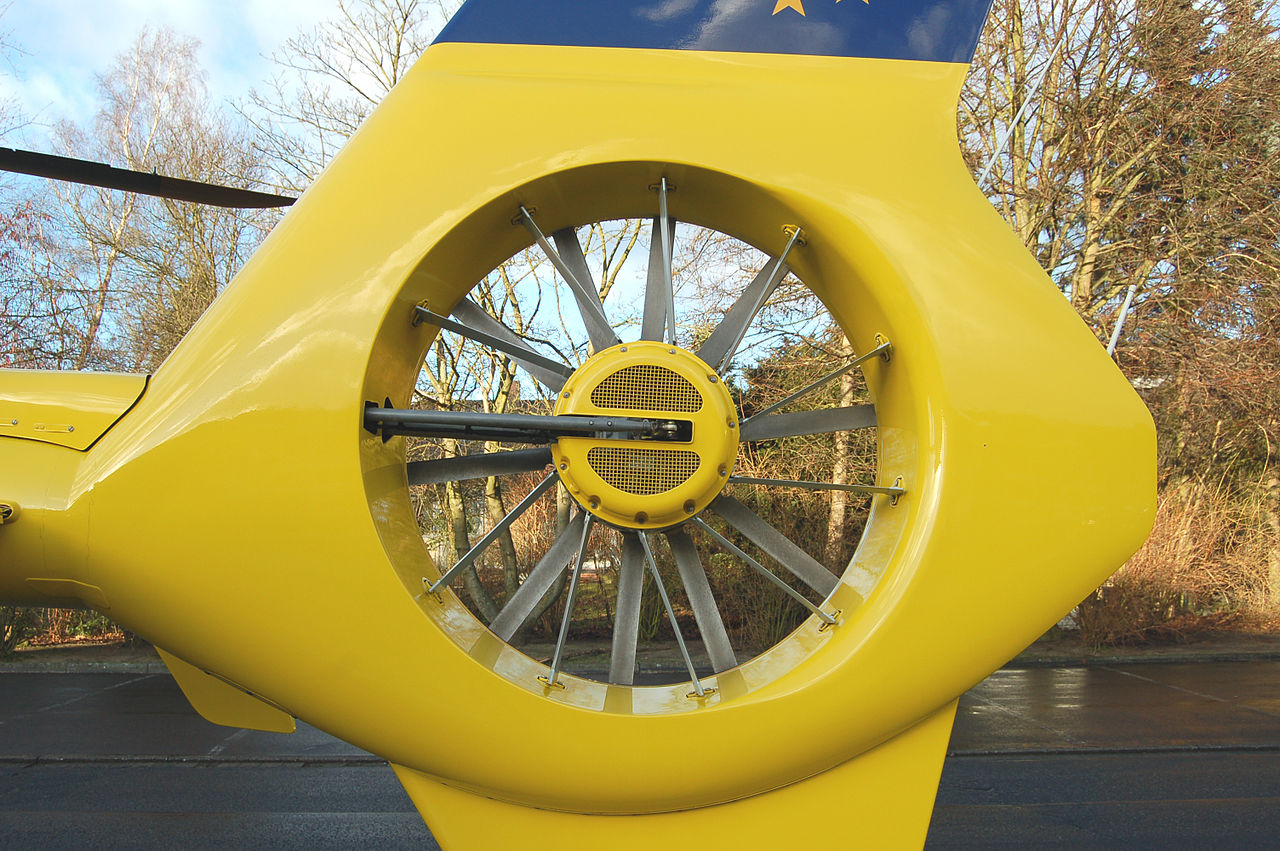Though NOTAR looks simple from outside, its actually a bit complicated. Let me use the following figure to elaborate on this point.

By Voytek S - Own workThis vector image was created with Inkscape., CC BY-SA 3.0, Link
Details from the figure: 1. Air intake
2. Variable pitch fan
3. Tail boom with Coanda Slots
4. Vertical stabilizers
5. Direct jet thruster
6. Downwash
7. Circulation control tailboom cross-section
8. Anti-torque lift
You have the ducted fan (2), which is driven using power from the gearbox, which is used to produce the anti-torque effect through Coandă effect. Note that this fan has a variable pitch, which is adjusted similar to the tail rotor.
The Coandă effect actually provides only about two thirds of the required anti torque. The other one third is provided by the directed jet thruster (5) which rotates about the tail boom axis (that is why it is projecting outside) like a rotating can.
The problem is that in cruise, the effect is markedly reduced by the airflow over the tail boom, which is overcome by making the vertical stabilizers (4) adjustable. So basically, you have three systems for adjusting the anti-torque, compared to one in the conventional tail rotor. More systems translates into more parts, more complexity, more chances of failure and more maintenance, not to mention that this makes the helicopter tail heavy. For example, when using the same engine, the NOTAR MD 520N is heavier than the conventional MD 500E (from which it was developed) (Source:1, 2).
As you've noted, this system is not as fuel efficient and sacrifices speed and range for lesser noise and improved safety. Its a tradeoff and most operator would take the better performance over others.
In case of military helicopters, the main problem for helicopters, the infra-red detection, is improved in case of NOTAR only if the engine exhaust (or part of it) is routed through the fan, as the South Africans did with the Aérospatiale Alouette III III in their Cirstel (Combined Infra Red Suppression and Tail rotor Elimination) project.

Denel Cristel; image from stingrayslistofrotorcraft
As the site explains,
The Cirstel principle splits the high pressure air from the engine for use in the Coanda slots, while the low pressure air is bled-off for the tail thruster and to mix and cool the engine exhaust. The thruster nozzle is a Denel-patented clamshell design, unlike McDonnell Douglas' `rotating can' concept.
As you can see, the system is further complicated. In addition, routing the hot air through the tail boom brings its own headaches and is better avoided. So, even in that sense, the advantage is not striking.




